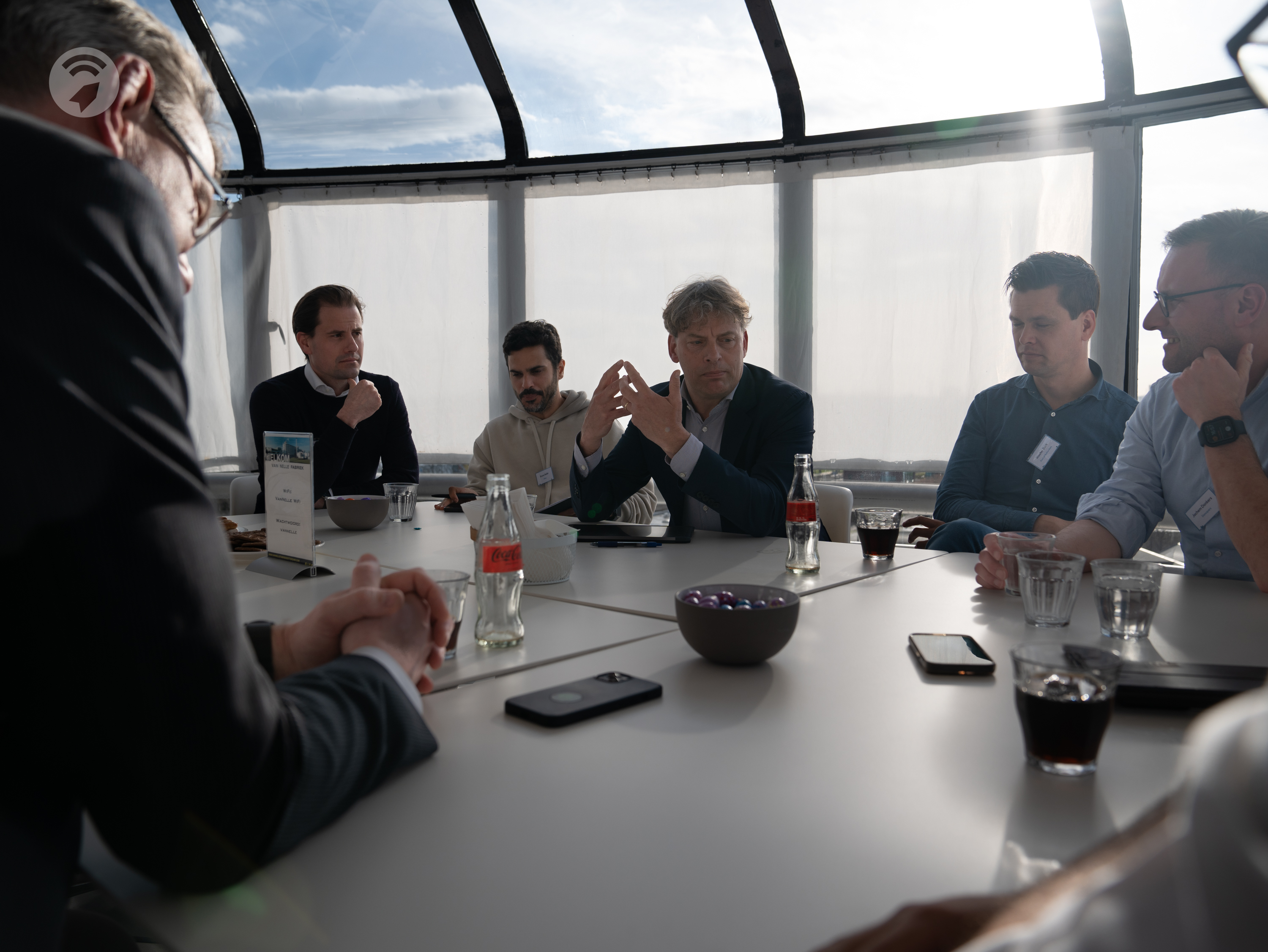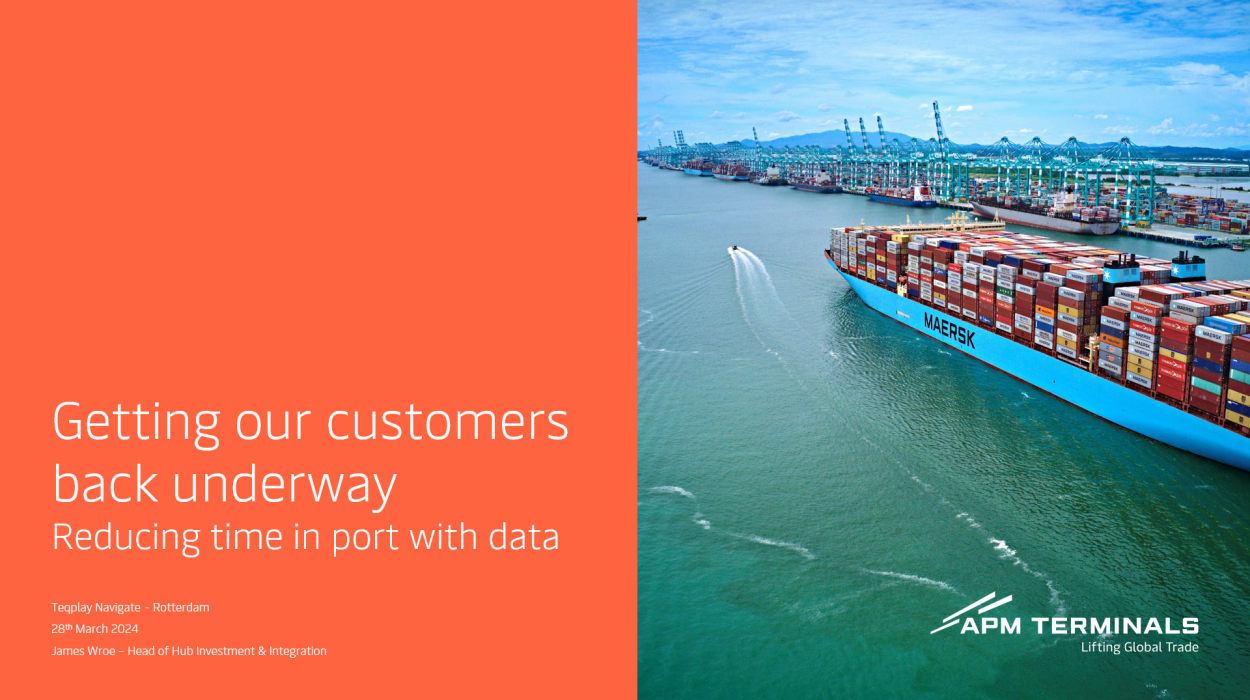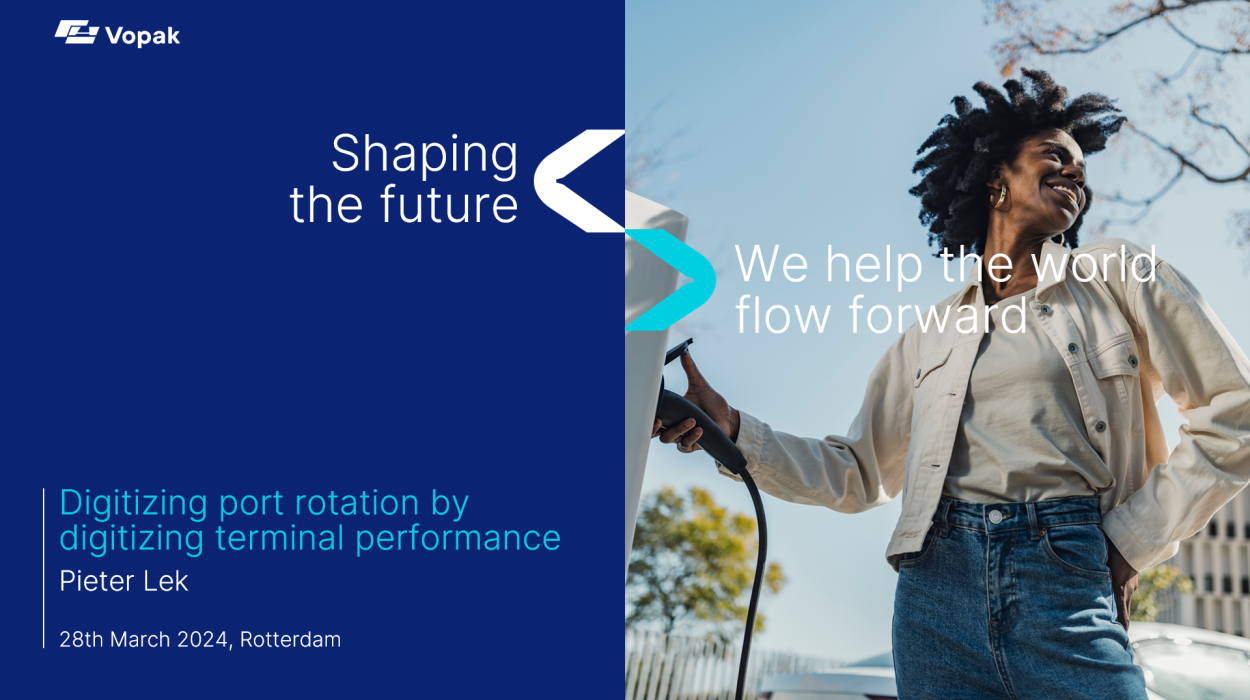Roundtable Discussion: From collaborative diagnostics to collaboration
In Navigate 2024, Professors Albert Veenstra and Rob Zuidwijk from Erasmus University Rotterdam facilitated a roundtable discussion around the topic of collaboration in the maritime industry. Each professor moderated a table of about 10-12 attendees who represent various parties in the industry. This blog is a summary and conclusions from the professors about this discussion.

From Professor Albert Veenstra’s table:
The conversation revolves around the complexities and challenges of data sharing and collaboration in the context of maritime operations, particularly focusing on terminals, vessels, and various stakeholders involved. Participants discuss the importance of data sharing for improving performance, efficiency, and sustainability in the shipping industry. They highlight the need for trust, transparency, and common goals among parties to facilitate effective collaboration. The conversation also touches upon issues such as legal concerns, conflicting interests, and the role of technology in enabling data sharing. Overall, there is a recognition of the benefits of data sharing but also an acknowledgment of the challenges and complexities involved in implementation.
Key findings:
- Data Sharing Benefits: There is a recognition of the benefits of sharing data among different stakeholders in the port and shipping industry, including improved efficiency, performance, and sustainability.
- Trust and Transparency: Building trust and establishing transparency are essential for successful data sharing initiatives. Anonymizing data and starting with small, controlled environments can help foster trust among stakeholders.
- Start Small, Scale Smart: Rather than aiming for large-scale data sharing initiatives from the outset, it’s advisable to start small, focus on controlled environments, and gradually scale up based on successes and lessons learned.
- Common Goals: Identifying common goals among stakeholders is crucial for effective collaboration. This includes aligning incentives and defining shared objectives that benefit all parties involved.
- Technological Enablement: Leveraging technology, such as AI and data analytics, is important for extracting value from shared data. However, it’s essential to avoid overwhelming customers with complex technical solutions and instead focus on delivering tangible benefits.
- Environmental Considerations: Environmental concerns, such as reducing CO2 emissions and promoting sustainability, are increasingly influencing decision-making processes in the industry. Collaboration on data sharing can contribute to achieving environmental goals.
- Legal and Commercial Challenges: Addressing legal, commercial, and privacy concerns surrounding data sharing remains a challenge. Overcoming these challenges requires careful consideration of regulations, contractual agreements, and risk mitigation strategies.
- Continuous Learning and Improvement: Embracing a culture of continuous learning and improvement is vital for navigating the complexities of data sharing initiatives. This includes learning from mistakes, adapting strategies based on feedback, and remaining open to new ideas and approaches.
Overall, the conversation highlights the importance of collaboration, trust, and technology in driving successful data sharing initiatives within the port and shipping industry.

From Professor Rob Zuidwijk’s table:
The participants in the discussion are deeply entrenched in the intricate landscape of port operations and the ongoing digitalization endeavors within the industry. Participants introduce themselves, delineating their roles and underscoring the pivotal role of collaboration and technological innovation in enhancing operational efficiency and overall performance within port ecosystems.
The round table discussion organized itself around three levels of collaboration, i.e., data sharing, collaborative diagnostics, and collaborative planning.
Data sharing
Throughout the discourse, there is a consistent thread emphasizing the necessity of standardization in data sharing protocols across diverse stakeholders. As the conversation progresses, participants delve into the burgeoning volume of data inundating the industry and the attendant implications. They articulate concerns regarding the ability to keep pace with this exponential data growth and stress the imperative of efficient standardization processes to harness its potential effectively. Questions abound regarding the definition of relevant data metrics and the attainment of a shared understanding across stakeholders, amidst disparities in naming conventions and data ownership.
The discussion focused itself around milestones in container logistics, with a focus on port call operations. Sharing such data clearly requires standardization of what such milestone data exactly means. As standardization is complex, with network of many organizations each with their own requirements, that idea was to build from best practices, and can be of an ad-hoc nature (“under the Houston bridge”). Also, many milestones depend on proprietary information such as geofencing areas. Question was who should act as orchestrator in data sharing and arriving at standards – could it be the port authority? The discussion moved toward diagnostics as the observation was made that milestone data shows considerable variance. Organizations may be reluctant to share milestone data as they may be seen to hold a promise instead of an expected event time.
Despite these challenges, there is a palpable sense of optimism regarding the transformative power of collaborative platforms and technological advancements.
Collaborative or joint diagnostics
It was immediately clear from the discussion that consequences of diagnostics go well beyond the operational arena; there is a commercial dimension as well, for example with demurrage. In addition, using data to arrive at diagnostics by information systems was put in perspective, as the operators on the work floor understand a lot about the context and easily point at root causes (but perhaps with bias). In any case, arriving at a joint diagnostics could be very helpful, but there needs to be a sense of urgency to overcome the obvious barriers. Example use cases for joint diagnostics were mentioned, such as deep sea tankers where the need for diagnostics was very high, or port call at the land side with Nextlogic (interestingly enough, joint planning precedes joint diagnostics in that case). Relevant attributes of joint diagnostics are terms and conditions that are in play, trust, and process automation.
Collaborative planning
This was generally considered one step too far. The aforementioned commercial or legal issues play an important role here. In this regard, there may be differences between bulk and container shipping.
In summary, the discussion encapsulates the multifaceted nature of port operations, highlighting the interconnectedness of collaboration, trust, and data-driven insights in driving meaningful progress. It serves as a testament to the industry’s resilience and adaptability in the face of formidable challenges, underscoring the transformative potential of collaborative efforts in shaping the future of port operations and logistics.
All blog posts from Navigate 2024




